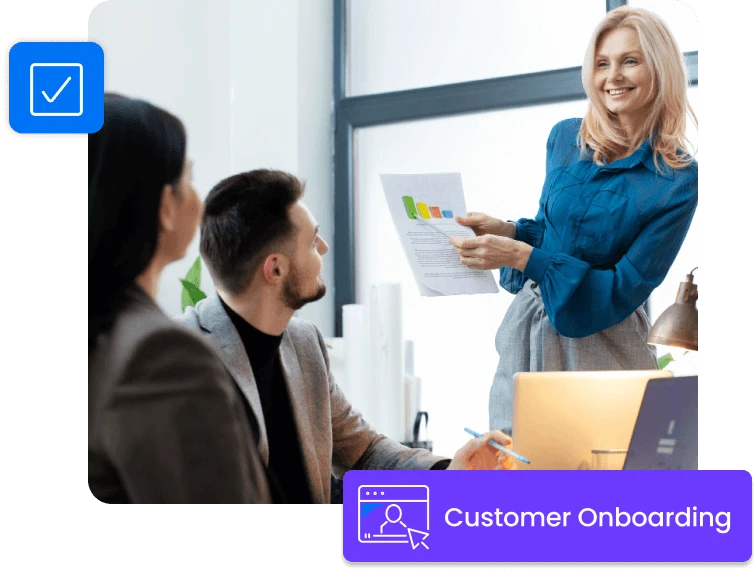Customer Onboarding

What Is Customer Onboarding?
Customer onboarding is the first stage of the customer journey once they begin using a product or service. This stage of the customer journey often defines their relationship with a product or brand. It is vital to make this experience as positive as possible. The more complex the product, the more strategic the customer onboarding process must be. SaaS products, for instance, can require orientation, training, and ongoing correspondence. Onboarding can include elements such as:
- Software tutorials or training
- Online documentation
- Correspondence, via email, phone, or in-person
- In-app guidance and contextual learning
Optimizing the onboarding process is essential to lowering customer churn and maximizing retention. After all, customers can still abandon a product post-purchase — and many do just that if their experience doesn’t meet expectations. Other benefits of effective customer onboarding include:
- Improved customer retention, loyalty, and satisfaction
- Greater revenue — i.e., lifetime value — from successfully onboarded customers
- Reduced workload for trainers, technical support, or customer service staff
Customer onboarding should be considered part of the customer experience. As with other portions of the customer journey, it should be mapped out and optimized. One way to optimize onboarding in today’s digital workplace is through a digital adoption platform (DAP). These cutting-edge onboarding platforms automate various aspects of the onboarding process, such as software training and correspondence. Such automated onboarding reduces human labor time, improves the onboarding experience, and decreases frustrations with the onboarding process.
Frequently asked questions
The three types of customer onboarding are high-touch (human-centric, 1:1 digital customer support), low-touch (customers use provided resources like webinars, emails, and how-to-guides), and tech-touch (customers onboard themselves using self-serve resources like email newsletters, blog, and video tutorials). The type of customer onboarding you need depends on your company and department’s needs.
The customer onboarding specialist handles customer onboarding and is responsible for ensuring customer success throughout their onboarding experience. McKinsey shows that the average onboarding process can take up to 100 days, so a qualified customer onboarding specialist must be present to ensure success throughout this period to benefit the customer and the company.